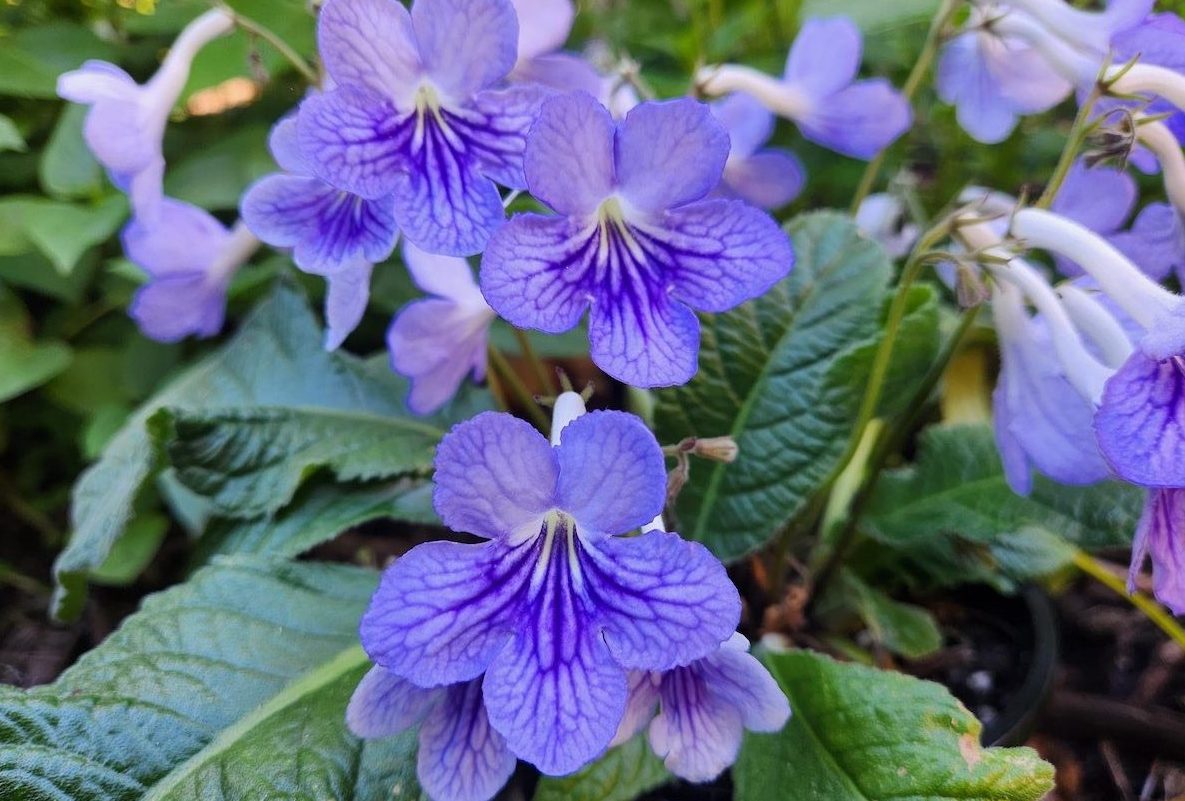
It’s all about leaves, snow peas, strawflowers and an indoor plant that can flower just about all year round with very little care. It’s all in JACKIE WARBURTON’s gardening column this week.
CAPE Primrose or Nodding Violet (Streptocarpus) can be an irresistible indoor plant to grow in a position of bright, indirect sunlight.

A member of the Gesneriad family, Streptocarpus has the showiest flowers that bloom for months.
Botanically, it is neither a primrose nor a violet. Streptocarpus is a little tougher than violets and a great plant for novice growers.
It can be fussy about its watering requirements, preferring tepid wick watering or watering with a saucer when needed.
In the right spot, it can flower just about all year round with very little care.
Other popular plants in this family to grow are African Violets and Sinningias. All enjoy the same conditions if growing indoors.
Gesneriads are from the tropics and prefer the temperature to be around 16C-24C to grow well.
Overwatering encourages pest and disease issues such as aphids, whitefly and mealy bugs, which are difficult to get rid of.
All Gesneriads need fertilising regularly to encourage continual flowering.
Sinningias have tubers and need to be planted proud of the potting media to grow successfully. The striking bright orange flowers against the textured foliage make it an interesting plant on a windowsill.
A Sinningia hybrid, Gloxinia, is also an easy plant to try. It has velvety leaves and bell-shaped flowers that come in many colours such as white, pink, reds and blues.
It has similarities to African Violets and, as a tuberous plant, will regrow from the underground tuber after flowering.
It can be discarded as an annual or potted up into a fresh new potting mix and ready for the next season. All of these species need a potting media specific for African Violets. However, ordinary potting mix can be used with some perlite and lime added to get a pH of 6.5-6.8.
ALL fallen autumn leaves should be removed from the tops of hedges and paths.
Leaf mould is gold in the compost world and if there is open space in the garden beds, spread leaves around and sprinkle pelletised manure or blood and bone on top and water in.
Hopefully, this will deter rats and rabbits in the garden and also get the soil ready for winter and spring planting.
The larger the leaves, the longer they take to break down. If the layer is too thick, it may need periodic turning through winter. Mowing over the leaves beforehand accelerates decomposition.
IF snow peas were planted late summer or early autumn, they should be coming into flower soon and ready to pod.
Keep the frost away from the flowers and lightly cover with cloth if needed. With enough sun and moisture, the more you pick, the more they grow.

SMALL, native strawflowers are putting on a show in my garden at the moment. They haven’t had any extra water and are doing amazingly well with growth and flowering.
They are a great, long-lasting flower in the winter garden or for a dried arrangement or a vase for the house.
Bracteantha bracteata “Mohave Orange” grows low as a spreading groundcover and loves full sun and neglect. Its vibrant, everlasting strawflowers grow well in a sheltered space with protection from the winds.
For a species found in the ACT, NSW and Victoria, there’s Xerochysum viscosum with lovely buttery yellow flowers.
Jottings
- Liquid feed all leafy vegetables to keep them growing fast.
- Final pruning of evergreen hedges before the big frosts arrive.
- Sow peas and broad beans in a warm spot.
- Last chance to transplant garlic, onions, spinach and lettuce.
Who can be trusted?
In a world of spin and confusion, there’s never been a more important time to support independent journalism in Canberra.
If you trust our work online and want to enforce the power of independent voices, I invite you to make a small contribution.
Every dollar of support is invested back into our journalism to help keep citynews.com.au strong and free.
Thank you,
Ian Meikle, editor





Leave a Reply